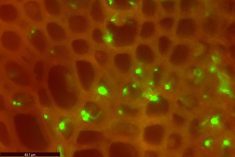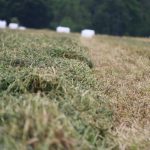The long-tern effectiveness of Bt corn in protecting crops from destructive insects hinges on preventing the bugs from developing resistance to Bt, a built-in insecticide.
To avoid resistance farmers must plant the proper refugia of non-Bt corn with their Bt crop. And that’s going to get easier to do, John Gavloski, an extension entomologist with Manitoba Agriculture, Food and Rural Initiatives (MAFRI), told farmers Feb. 10 at the Manitoba Special Crops Symposium in Winnipeg.
When Bt corn is planted the traditional recommendation is for 80 per cent to be Bt and 20 per cent non-Bt. But several new corn hybrids only require a five per cent non-Bt corn refuge, Gavloski said.
Read Also

How much nitrogen can farmers really cut?
Manitoba fertilizer trials look for nitrification inhibitor sweet spot, to lower greenhouse gas emissions and cost without hurting yield.
There’s also talk of introducing “refuge in a bag” where Bt and non-Bt corn hybrid seed come blended so farmers don’t have to plant them separately.
The Canadian Food Inspection Agency is investigating the idea, Gavloski said later in an interview.
In the past corn experts believed an interspersed refuge would not be as effective as block plantings because corn insects such as the European corn borer are mobile.
Cutting the size of a refuge to as low as five per cent only happens when the Bt corn being planted contains more than one form of Bt targeted at a specific insect such as the European corn borer, Gavloski said.
“If you have two or more (types of Bt that kill the same insect) you really reduce the odds of the corn borer developing (Bt) resistance,” he said.
Planting corn that’s susceptible to insect damage when one can plant resistant hybrids might seem odd. After all, the Bt hybrid should kill all the insects resulting in higher yields and better returns. But in every insect population there is the odd one that’s naturally resistant to Bt and won’t die. In a field of 100 per cent Bt corn, the only bugs to survive will be the ones that are resistant. If Bt-resistant insects mate their offspring will be resistant too and it won’t be long until that particular strain of Bt is ineffective.
A refuge of non-Bt corn ensures there are susceptible insects to mate with the resistant ones resulting in Bt-susceptible offspring.
As critical as refugia are, Canadian farmers have been slipping when it comes to following the recommendations. In 2009 61 per cent of the cornfields were in compliance versus 81 per cent in 2005, the Canadian Corn Pest Coalition (CCPC), said in a news release a year ago.
Being permitted to plant a smaller proportion in refuge will make it easier for farmers to comply, Gavloski said. And compliance will be automatic where Bt and non-Bt corn hybrids come pre-mixed in a bag of seed.
Gavloski is optimistic Bt will be an effective tool for controlling corn insects for a long time to come. About 82 subspecies of Bt have been found, resulting in several that kill the same insect.
“If people do fol low the guidelines it (Bt) should be effective for quite a while,” he said. “The refuge is there to protect the technology.
“I think with the multiple traits attacking one insect being brought in, if we did see an instance where some resistance was found, using another Bt option would control the population.”
That doesn’t mean farmers can be complacent. Bt is essential to organic farmers who have far fewer insect control options.
Bt or Bacillus thuringiensis, is a soil-borne bacterium and unlike chemical insecticides, permitted in organic production.
The corn borer is the main insect of concern in Manitoba corn. Populations have been low for several years in the main growing areas of the central and east but slightly higher in the west, Gavloski said. The fact that more than half (and some years two-thirds) the corn acres planted in Manitoba have been Bt hybrids might have contributed to the decline, he said.
“We haven’t had major corn borer issues in the past several years,” Gavloski said.
“I couldn’t find enough for our research study last year,” he said. “A lot of fields we’d go in last year we’d slice for an hour and find three corn borers…”
Corn borer populations are also down throughout most of North America.
Given that, Manitoba farmers might reconsider growing Bt hybrids, which often are more expensive, he said.
Some Manitoba Bt corn hybrids also offer protection against the corn rootworm and the Western bean cutworm, but neither is found in Manitoba, Gavloski said. However, that doesn’t mean they won’t be someday.
In 1999 University of Manitoba researchers found five northern rootworms in Manitoba. It’s suspected they blew in from the United States, but didn’t get established here. None have been found since, Gavloski said.
The Western bean cutworm, which is native to parts of the United States, has been expanding to new areas, including Ontario. One hypothesis is the cutworm is on the rise because corn borer populations have been falling, he said. [email protected]
———
“Ifyouhavetwoormore(typesofBtthatkill thesameinsect)youreallyreducetheoddsof thecornborerdeveloping(Bt)resistance.”
– JOHN GAVLOSKI















